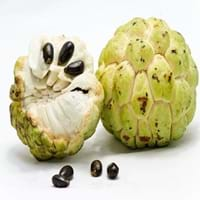Health Benefits
Cancer prevention, Heart care, Regulation of heart rate
Anti-oxidant properties, Boosts immune system, Skin rejuvenation, Strengthening of bones
General Benefits
Anti oxidant properties, Anti-inflammatory properties, Boosts immune system, Controls blood pressure, Digestive aid, Strengthens bones
Antiseptic properties, Cures headache, Removes waste from kidney
Skin Benefits
Reduces wrinkles, Skin rejuvenation
Hydrates skin
Hair Benefits
Promotes longer and healthier hair, Treatment of dandruff, Treatment of Lice
Good conditioner
Allergy Symptoms
Anaphylaxis, Itching, Skin rash, Swelling of face
Chest pains, Rhinitis, Wheezing
Side Effects
Allergic reaction, Possibly unsafe during pregnancy
Unknown
Best Time to Eat
As a snack in the late afternoon, Don't consume at night and before bed, Morning time (before lunch)
As a snack in the late afternoon, Don't consume at night and before bed, Eat the fresh ones, avoid mixing with any other foods, don't eat after meal., Morning time (before lunch)
Vitamin A (Retinol)
Not Available
Vitamin B5 (Pantothenic Acid)
Vitamin C (Ascorbic Acid)
Vitamin K (Phyllochinone)
Not Available
Phytosterol
Not Available
Calories in Fresh Fruit with Peel
Not Available
Calories in Fresh Fruit without Peel
Not Available
Calories in Frozen Form
Not Available
Calories in Dried Form
Not Available
Calories in Canned Form
Not Available
Calories in Juice
Not Available
Type
Tropical
Tree fruit, Tropical
Season
Autumn, Spring, Winter
Early summer, Early winter, Late fall, Late spring
Varieties
Andrews, Amarilla, Asca, Baste, Bays, Bayott, Behl, Canaria, Capucha, Deliciosa, Ecuador, El Bumpo, Guayacuyán, Jete, Juniana, Knight, Nata, Popocay, Sander, Smoothey, Tumba, Umbonada, Whaley and White Juliana
Rongrien, Chompu, Rapiah, Bingjai and Lebak Bulus
Color
Green, Yellow
Coral red, Yellow
Inside Color
White
Greyish-white
Soil Type
Sandy loam
Clay, Loam
Climatic Conditions
Warm
Humid
Facts about
- Cherimoya is also called as custard apple or chirimoya.
- The word cherimoya came from the Quechua word,'chirimuya',which means 'cold seeds'.
- The cherimoya is called as 'the tree of ice cream'.
- Oils extracted from its seeds is used to make soaps and candles.
- 'Rambut' means hairy in Malay.
- It makes the best hair mask.
- Seeds are edible and healthy too.
Top Producer
Spain
Thailand
Other Countries
Argentina, Chile, Colombia, Egypt, Italy, Mexico, Peru, South Africa, United States of America
Africa, India, Indonesia, Malaysia, Philippines, Sri Lanka
Top Importer
United States of America
Singapore
Top Exporter
Spain
Thailand
Botanical Name
Annona cherimola
Nephelium lappaceum
Synonym
Not Available
Rambota
Subkingdom
Tracheobionta
Tracheobionta
Division
Magnoliophyta
Tracheophyta
Class
Magnoliopsida
Magnoliopsida
Subclass
Magnollidae
Rosidae
Order
Magnoliales
Sapindales
Family
Annonaceae
Sapindaceae
Species
A. cherimola
N. lappaceum
Generic Group
Not Available
Not Available
Difference Between Cherimoya and Rambutan
We might think that Cherimoya and Rambutan are similar with respect to nutritional value and health benefits. But the nutrient content of both fruits is different. Cherimoya and Rambutan Facts such as their taste, shape, color, and size are also distinct. The difference between Cherimoya and Rambutan is explained here.
The amount of calories in 100 gm of fresh Cherimoya and Rambutan with peel is Not Available and 69.00 kcal and the amount of calories without peel is 75.00 kcal and Not Available respectively. Thus, Cherimoya and Rambutan belong to and category.These fruits might or might not differ with respect to their scientific classification. The order of Cherimoya and Rambutan is Magnoliales and Sapindales respectively. Cherimoya belongs to Annonaceae family and Rambutan belongs to Sapindaceae family. Cherimoya belongs to Annona genus of A. cherimola species and Rambutan belongs to Nephelium genus of N. lappaceum species. Beings plants, both fruits belong to Plantae Kingdom.









